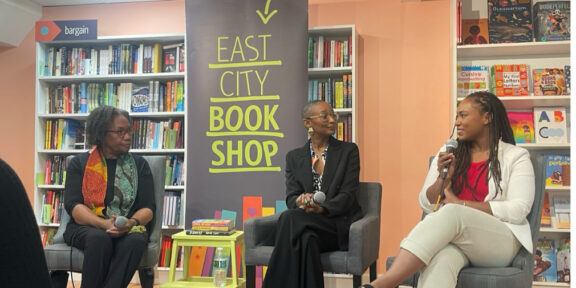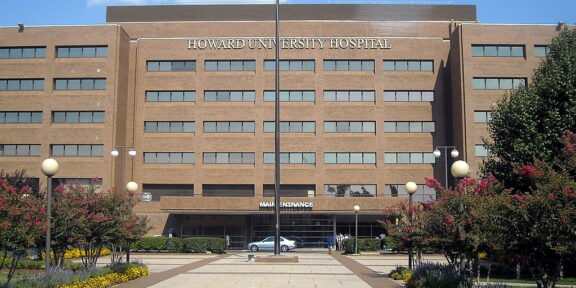After over a decade on the rise, the rate of homelessness in the District of Columbia is finally beginning to decrease. Poverty has and continues to be one of the longstanding issues D.C. faces, but many have stepped up to help those in need.
D.C. residents come to So Others May Eat’s emergency shelter on O Street NW to get their necessities met each day. The shelter offers two hot meals a day, clothes twice a week, skill training, games, phone charging stations, and a safe place that isn’t on D.C.’s streets.
SOME cite its food services program as the heart of the organization. Each day, the dining room sees roughly 1,400 people during breakfast and lunchtime meals. Yet at SOME, a meal isn’t just food. It’s time to charge your phone, warm up, and engage with people that are going to treat you with humanity.
“Often the homeless population is invisible,” said SOME program director Daryl Wright, “People try not to pay attention to them at the red lights. You pretend not to hear them when you walk in a 7-Eleven, and they ask you for change but when you’re sitting at the table playing cards for someone and laughing and joking it opens them up to being human.”
Washington D.C. is one of the many cities around the nation that struggles with poverty. Compared to the rest of the country, D.C sits with 16.6% of its citizens below the poverty level. In Ward 5 specifically, 17.2% of its roughly 75,000 residents are impoverished. On any given day, around 7,000 homeless people are accounted for in the District of Columbia. Those are startling figures, especially because many of those in need are families.
“Here they got free breakfast, lunch. The people here, like the employees, volunteers, they’re really nice,” said homeless citizen, Joseph Smith. “I come here pretty often just to hang out.”
Every event at SOME is managed by a combination of full-time staff members and volunteers. The volunteers are generally made up of faith-based groups, families and mandated volunteers. D.C requires students to volunteer to graduate and government workers complete 100 hours of community service per year.
Over the last few years, SOME has found new ways to incorporate a more substantial population into volunteerism. Those in professional fields now come in to teach courses in their craft so that SOME’s clientele can learn information that could help them to succeed because the goal of the emergency shelter is to move people along in life, not help them remain stagnant.
Though SOME and several organizations around the District are dedicating their services to the impoverished, the question remains, is it enough?
Washington D.C is in a predicament; there’s less housing available to low-income residents, poverty, and homelessness are still high, and inequality is ever present, says Ward 5 Councilmember Kenyan McDuffie (D). McDuffie says he is aware of the problems present in DC and is aware that local government needs to do more to provide for its citizens.
“The future economic growth of the city must be more inclusive,” McDuffie said. “Every person must have basic living standards, access to healthy food, safe, affordable housing, and quality education and basic healthcare.”
“The District realized that the model of housing first was necessary to implement,” said Pathways to Housing DC representative Becca Lamb. They needed to meet peoples basic need of housing before they could move on with other parts of their agenda.
SOME try to meet these goals by having a clinic located directly across from their shelter. It’s what helps to make SOME a complete package. There, it offers all primary care including dental, medical, psychological, and case management services. It’s open to everyone, and it exists to help give the resources people need to become stable.
“My goal isn’t to keep you in my division [emergency services], it’s to move you along. Eventually, you will be self-supportive, but you need to get stabilized,” said Wright.
“And eventually you’ll meet all those criteria to get you into one of our [permanent] housing programs.”
With the aid of programs and councils, homelessness in the District is facing a battle. However, D.C. leaders are providing the tools needed to limit the homelessness crisis facing the city eventually.





